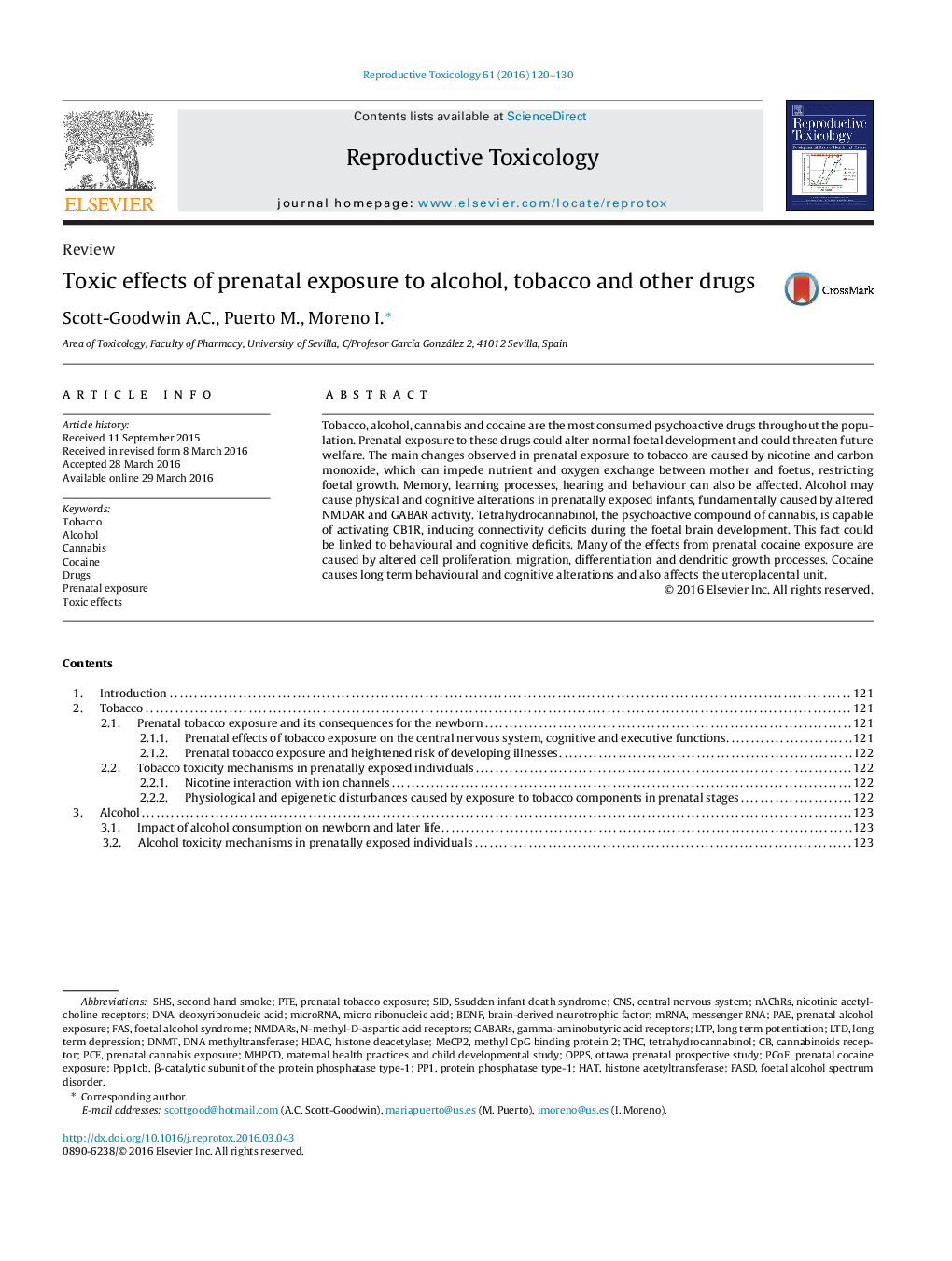| کد مقاله | کد نشریه | سال انتشار | مقاله انگلیسی | نسخه تمام متن |
|---|---|---|---|---|
| 5857996 | 1562158 | 2016 | 11 صفحه PDF | دانلود رایگان |
- Psychoactive drugs may cause long-term and short-term problems in prenatally exposed newborn.
- These psychoactive drugs have multiple ways of altering physiological processes.
- Cognitive, physical and executive processes are the most commonly affected by prenatal exposure.
- Interaction with certain receptors and transporters is a common feature of these substances.
- Many alterations may be explained through epigenetic dysregulation.
- Sometimes, abstinence syndrome at delivery is responsible for many of the changes observed.
Tobacco, alcohol, cannabis and cocaine are the most consumed psychoactive drugs throughout the population. Prenatal exposure to these drugs could alter normal foetal development and could threaten future welfare. The main changes observed in prenatal exposure to tobacco are caused by nicotine and carbon monoxide, which can impede nutrient and oxygen exchange between mother and foetus, restricting foetal growth. Memory, learning processes, hearing and behaviour can also be affected. Alcohol may cause physical and cognitive alterations in prenatally exposed infants, fundamentally caused by altered NMDAR and GABAR activity. Tetrahydrocannabinol, the psychoactive compound of cannabis, is capable of activating CB1R, inducing connectivity deficits during the foetal brain development. This fact could be linked to behavioural and cognitive deficits. Many of the effects from prenatal cocaine exposure are caused by altered cell proliferation, migration, differentiation and dendritic growth processes. Cocaine causes long term behavioural and cognitive alterations and also affects the uteroplacental unit.
Journal: Reproductive Toxicology - Volume 61, June 2016, Pages 120-130
